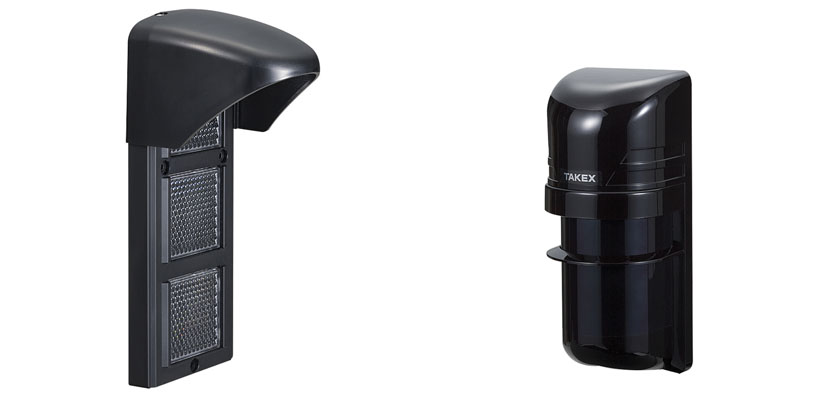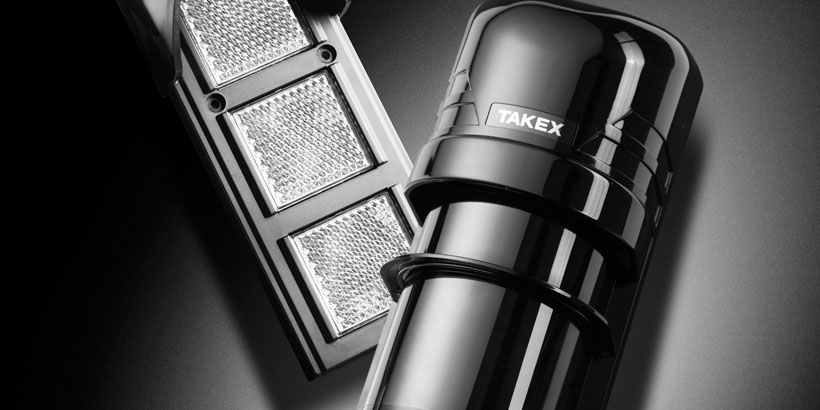The active photoelectric beam detector is a reliable and proven tool when it comes to perimeter protection. These devices offer a high degree of flexibility, and can be customised to suit a wide range of perimeters. They can also be used within large sites to protect entrances and exits, passageways, roads and a host of other applications. For many, active photoelectric beam sensors are a cost-effective yet efficient and reliable solution.
The most common types of infrared beam sensors are supplied as pairs, with transmitter and receiver elements. However, to enhance the flexibility on offer from these established sensors, there are also reflector-based units. These types of sensors have an advantage in that only one side of the link needs to be connected. The main unit is a transceiver (both transmitting and receiving), while the other part of the link is a reflector.
These units are ideal for applications where wiring to both sides of the link is problematic, where sources of interference might create problems with regard to performance, or where budgetary constraints call for a simpler solution. In addition, for the integrator or installer, correctly configuring a reflector-based beam device is faster and simpler, and can be achieved by a single engineer without difficulty.
However, it should be noted that reflector-based photoelectric beam sensors don’t have to be a step down in terms of security. Where the application requirements are right for such a specification, modern reflector-based units offer a high level of protection. It must also be remembered that not all reflector-based sensors are the same. Some feature advanced technologies which deliver superior levels of protection.
Two levels of security
The best way to appreciate the differences between types of reflector-based photoelectric sensors is to compare two models. The PR-11BE and the PR-30BE are both reflection-type photoelectric beam sensors from TAKEX. Both can be used in internal and external locations, and both only require wiring for power and alarm signalling to one side of the link. As mentioned, this makes the devices simpler and more cost-effective to fit.
Other similarities are adjustable angles for the beam output, low power input requirements (10.5-30V DC), the use of NO/NC dry contact relays, variable response times and a wide range of operating temperatures.
However, the main difference between the two models is the technology used to monitor for alarms.
The PR-11BE emits infrared light, which is returned to the main unit via the reflector. The sensor monitors the returning beam, creating an alarm condition if there is a break in the continuity of reflected light. Configurable for response time (which can be varied dependent upon the risk), the sensor will then report any breaks in the beam. It can protect an area of up to 11 metres outdoors or 15 metres indoors.

The PR-30BE is different, in that it uses Time of Flight technology. Like the PR-11BE, the main unit emits infrared light, which is reflected back. The sensor monitors the returning beam, creating an alarm condition if there is a break in the continuity of reflected light. However, it can also detect if the beam has been reflected by any other source that the originally installed reflector element. It does this using Time of Flight (TOF) technology.
TOF technology accurately measures the time it takes for a signal (in this case the infrared beam) to return to the unit once it has been transmitted. The device ‘learns’ the time taken for the beam to be reflected and returned under normal conditions. If the signal is not returned, or if it is returned in a different timescale, then an alarm is generated. This eliminates problems with spurious reflections from white or high gloss surfaces.
TOF technology is already used in laser-based devices. These typically cost a significant amount more than photoelectric beams, but the inclusion of TOF technology makes them suitable for high risk applications and uses where accuracy is critical.
The PR-30BE has a 30 metre range for external applications and 40 metres for internal use. It is equipped with environmental monitoring to compensate for adverse weather conditions, and response time is configurable.
A superior solution
Standard reflection-based photoelectric beams offer a robust and reliable level of security, in a cost-effective and easy-to-install package. However, should a higher degree of security be required, Time of Flight technology can enhance the protection on offer while retaining the benefits of a reflector-based unit.


